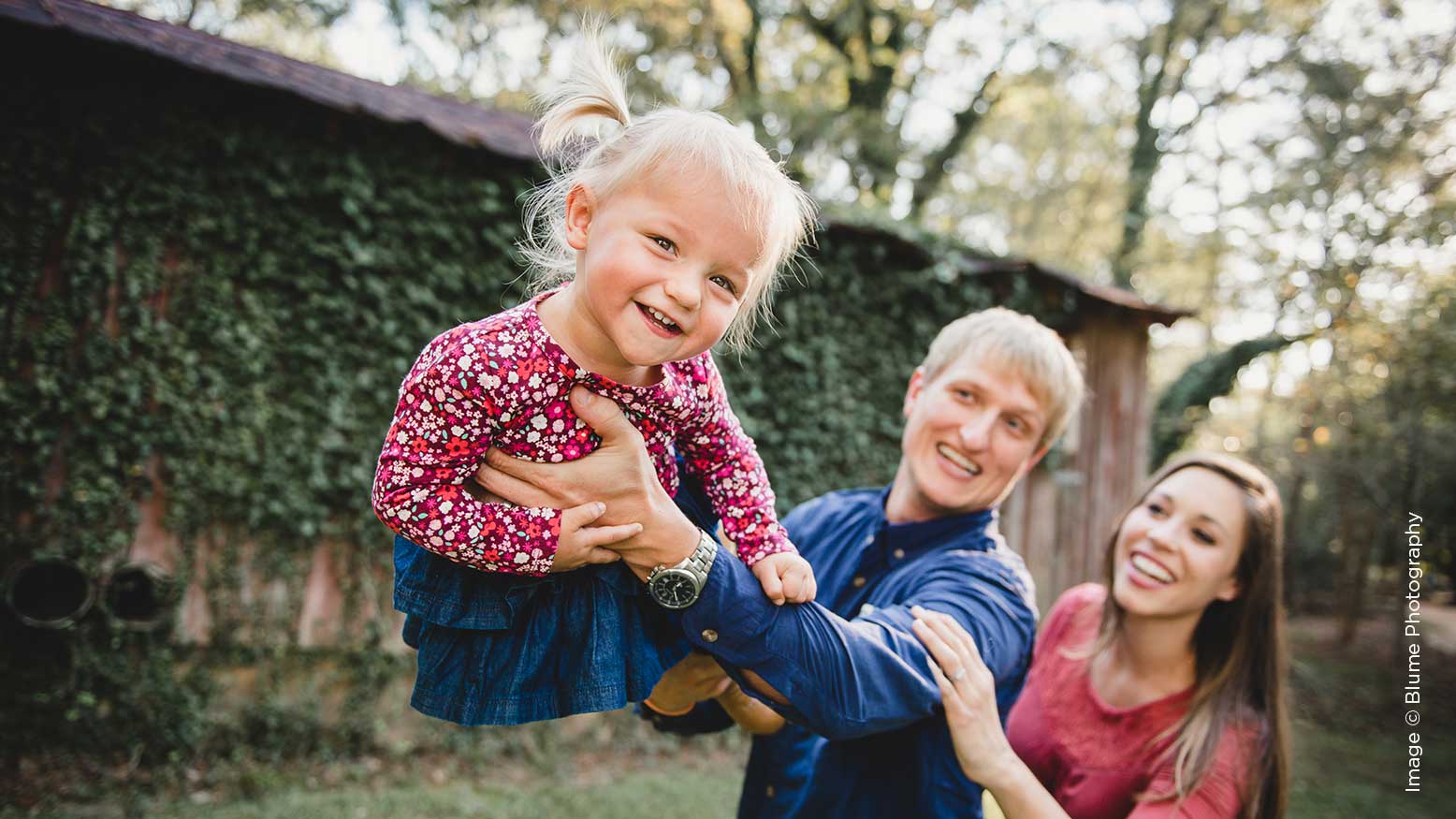The 4 Secrets of Child-Whispering with Phillip Blume
Photographing children used to stress me out. Don’t get me wrong, I’ve always loved kids! I would happily play all day with them, giving piggyback rides or pushing them on the swing set. But if you put a camera in my hands around them, I would suddenly lose all control. I tried to use a sweet voice and give simple directions, but I just couldn’t keep their attention anymore.
Now, everything is different. There’s truly no subject I enjoy photographing more than children. And my personal experience is 180-degrees different—I’m in control again.
So what changed? Let’s just say nine years of fatherhood and eleven years of photographing children helped me develop a few strategies to consistently regain control over my young subjects. In short, I became a “child-whisperer.”
Sometimes my child-whispering strategies feel like magic, but it’s nothing you can’t learn. So let’s look at just a few techniques to help you become a child-whisperer, too!
Tip 1: Share The BIG Secret
When a family arrives on location for portraits, whom do you greet first? You usually greet the adults first, right? But kids are tuned in to every nonverbal queue we give, and our greetings say a lot. They immediately communicate whose relationship we value most. So I always greet the kids first by name. The parents can wait—believe me, they won’t be offended. In fact, they’ll likely be impressed by your attention to their kids and the positive effect it has.
I waste no time. As soon as I meet the kids, I share with them The Big Secret. I can’t believe I’m even sharing this with you for free, because The Big Secret is priceless. I’m usually giggling to myself when I share it, and it goes something like this: “Listen! Do you guys want to play a trick on your mom and dad? They think we’re just going to take normal pictures. So don’t tell them! But we’re really gonna surprise them and make them laugh a lot, okay?”
The wider your eyes are as you share The Big Secret, the wider the kids’ eyes will become as their imaginations begin to run wild with what you have planned. Because, really, you haven’t given them any details yet. Just finish by whispering, “Okay, then we’ll start by pretending to do a normal picture. But get ready…as soon as I count ‘1-2-3’ we’re going to do the big surprise!” Now the kids have their listening ears tuned to me everywhere we go. I set up and get a few of those “boring, normal” pictures, then I count “1-2-3,” and direct the kids to suddenly tickle their parents, plant big slobbery kisses, tackle them, or any wild antic I can think of to give the kids a great emotional payoff.
Tip 2: Reverse Psychology
The most refined reverse psychology doesn’t sound like, “Now, don’t smile for this picture.” With that, you’ll just confuse the kids!
Opposite to what you might expect, kids don’t usually misbehave because they feel superior or “in control.” Rather, kids more often act out because they feel vulnerable and “out of control.” It’s their attempt to self-protect in a stressful situation.
So, make it clear that you’re giving the kids a degree of control from the beginning. If a little boy won’t stop sticking his tongue out at the camera, I don’t chastise him or ask him to stop, but I don’t wait silently either. I actually praise the behavior, saying something like this: “Oh, ya! Haha, that’s awesome! Keep sticking your tongue out just like that. What a funny idea. I love that! This is my favorite picture ever!”
Next, I steer us back on course in two incremental steps: Step 1. “Oh, now do you know how to do a funny fish face?! Can you do that?” I avoid saying, “Let’s do a fish face” and instead ask “Do you know how?” which psychologically presents a challenge rather than a direction.
Since I’ve suggested another silly face, he can still feel he’s in control and testing the limits. But in one simple baby step, I’ve actually taken the reigns back as director. Step 2: “Now, I wonder if you know how to pretend you’re the sweetest little angel? Look, Mommy. Isn’t he the sweeeetest, most peeeerfect little angel you ever saw, smiling and making you soooo happy. I think I see a halo over his head!” Now you’re getting what you want, too!
Tip 3: Gifts That Keep Giving
My “treasure hunt” strategy works surprisingly well even for older kids, but it’s ideal for toddlers who don’t understand much verbal direction. You’ll just need a few easy-to-find, pocket-sized items: 1. plastic eggs, 2. deflated balloons, and 3. individually packaged LifeSaver gummies.
First put a packaged LifeSaver gummy and balloon in each egg. Next, before your clients arrive, hide the eggs near two or three of your favorite locations you’ve scouted. This setup allows me a couple different “bribing” strategies when I need them, which work a hundred times better than traditional bribing (i.e. dangling candy in front of a crying kid until she shuts up and complies—which, by the way, will never work in a million years).
For Strategy One, I begin with a simple promise: “We’re going to explore this garden. And I heard there’s a treasure hidden here! So if we go everywhere and take pictures, I just know we can find the treasure. Do you want to take the pictures and go on a treasure hunt?” Before, the kids were dreading this photoshoot. Now, it’s not a photoshoot at all. It’s a treasure hunt, and they’re totally into it! I don’t bother leading them to the hidden eggs yet. I rely on the anticipation to keep the kids going.
I pull out Strategy Two as soon as I feel I may be losing the toddler’s interest: “Oh my goodness, look! I think I might see a treasure! Look!” I guide the child to the general vicinity of the plastic egg, and I photograph her as she excitedly looks for it. (It’s stunning how long it can take a two-year-old to find an egg lying almost out in the open…but it makes for plenty of fun, candid photos.) Once she has the egg in her hands, watch her face light up—and be ready to capture the moment!
The gummy is perfect because, unlike with chocolate, hands stay clean and there’s no melty mess to try Photoshopping away later. But I don’t encourage kids to eat their treats right away. Instead, I playfully suggest a game: “Let’s play fetch!” The parents can throw the candy (or balloon, if that’s all that’s left) toward me. Then, as their toddler runs merrily to retrieve it, I get so many fun active shots!
Tip 4: Get Their Parents Onboard
Once you start child-whispering, you may find that a few parents seem to become more difficult than their children. Hey, I understand! Even I get wound too tightly sometimes. Sadly, some parents can’t wrap their minds around the idea that having fun leads to better portraits. They can’t seem to stop shouting commands at their kids, like, “Stop it! Hold still! Show your teeth when you smile! Can’t you behave?!”
To prevent grumpy parent syndrome, prepare them ahead of time via email. We use both our StickyFolios landing pages (where our clients book) and a series of pre-session emails to explain our child-whispering ways ahead of time. So parents come knowing what to expect and dress appropriately for all the fun they’re going to have. As a result, we’ve never before received so many kind thank you notes and sweet stories about kids who want to become photographers when they grow up!
Conclusion
Sure, kids may suffer from short attention spans or have limited vocabulary to understand my posing directions. But if you had a simple system to overcome all those challenges, wouldn’t you agree kids are naturally the most authentic, animated, and expressive subjects you can imagine? Not to mention their parents adore them and can’t buy enough of their portraits.
To me, kids are clearly the ideal kind of subjects for any portrait photographer. As you try out these new child-whispering strategies, I hope you agree. Have fun, and connect with me online to learn more.




